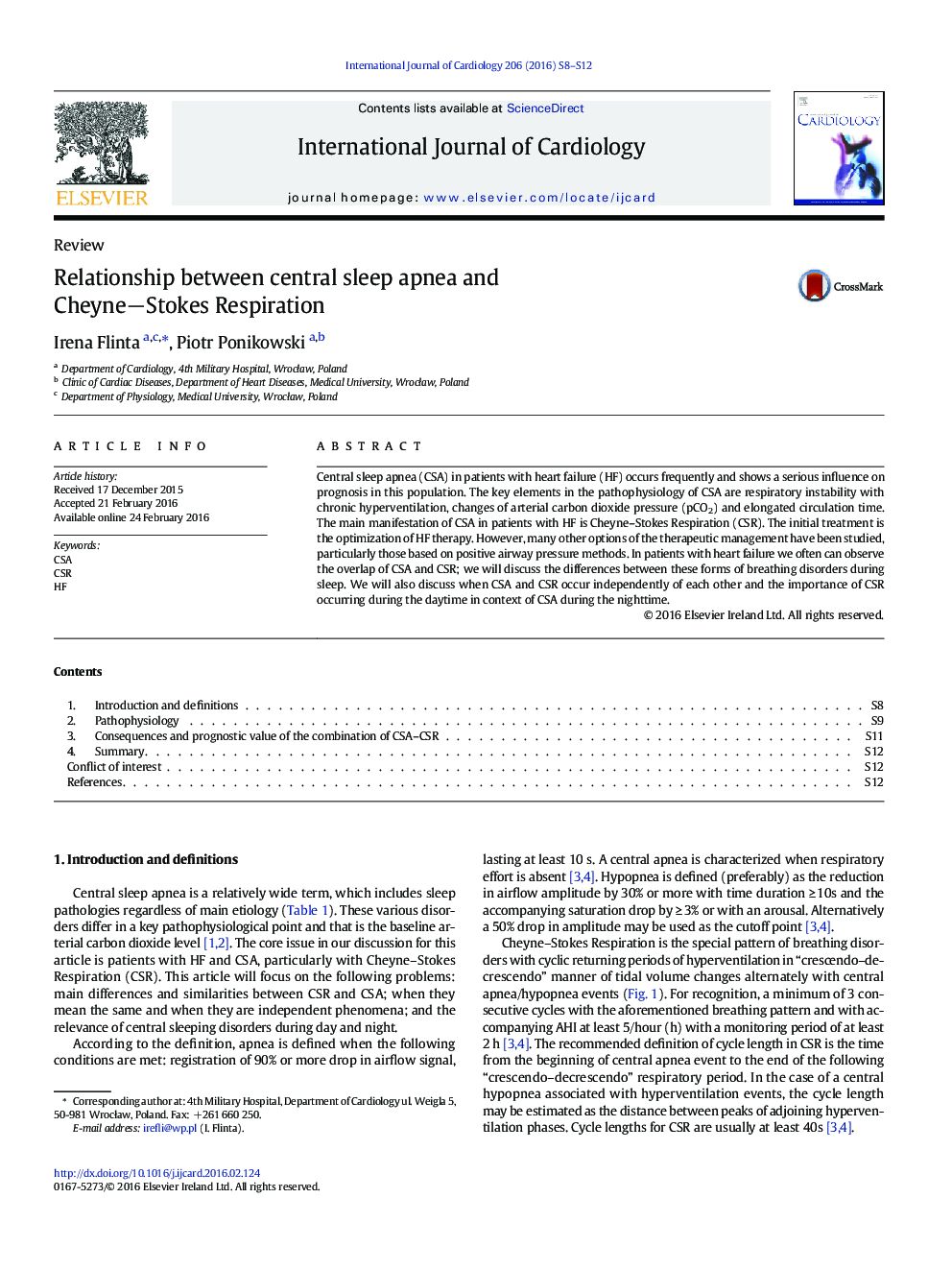| Article ID | Journal | Published Year | Pages | File Type |
|---|---|---|---|---|
| 2928802 | International Journal of Cardiology | 2016 | 5 Pages |
•Central sleep apnea (CSA)—common comorbidity in patient with heart failure (HF)•Cheyne–Stokes Respiration (CSR) is the main manifestation of CSA in patients with HF.•Substantial overlap between CSA and CSR in patient with HF•CSA/CSR negative impact on prognosis and their importance for therapy in HF•The potential compensatory role of CSR in HF — hypothesis to further investigation
Central sleep apnea (CSA) in patients with heart failure (HF) occurs frequently and shows a serious influence on prognosis in this population. The key elements in the pathophysiology of CSA are respiratory instability with chronic hyperventilation, changes of arterial carbon dioxide pressure (pCO2) and elongated circulation time. The main manifestation of CSA in patients with HF is Cheyne–Stokes Respiration (CSR). The initial treatment is the optimization of HF therapy. However, many other options of the therapeutic management have been studied, particularly those based on positive airway pressure methods. In patients with heart failure we often can observe the overlap of CSA and CSR; we will discuss the differences between these forms of breathing disorders during sleep. We will also discuss when CSA and CSR occur independently of each other and the importance of CSR occurring during the daytime in context of CSA during the nighttime.
